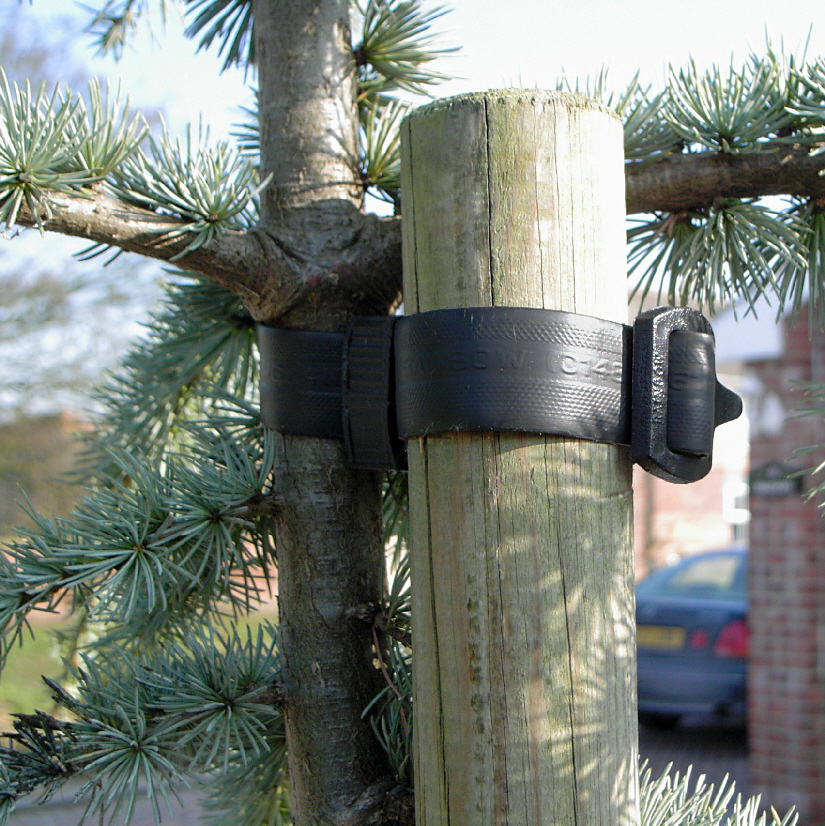
Buyers Guide to Tree Planting
Trees tend to grow slowly and the management of tree stock is a long-term process that requires careful planning. Once trees leave the nursery, they are highly vulnerable and must be planted correctly to give them the best possible chance of thriving in their new environment.
In this article, we’ll turn our attention away from the subject of how arborists maintain and keep established trees safe and healthy (and the tools they use to do this) an towards the start of a tree’s life – the point at which it is old enough to have left the nursery and be planted out.
Selecting which Trees to Plant
Mistakes can take decades to rectify so it is vital to select the correct species right from the outset. For urban streets, tree species need to be hardy and able to thrive in compacted and infertile soils. Popular street trees in the UK include Maidenhair and various species of Beech tree. Space and environment is also important with some tree species being inappropriate for narrow streets but perfect for open park areas.
In UK woodland, species selection is based on other factors, including species sensitive to the long term effects of climate change such as drought sensitive tree species on shallow, free-draining soils, particularly in southern and eastern England. There is lots of advice online on this from the Forestry Commission.
There are many factors that will come into the decision, such as the availability of light and water. Trees that have light coloured leaves often require more light. Some species such as willow require a lot of water. Trees with darker leaves, such as holly and yew, can tolerate shady conditions. Where possible, a diverse variety of species is good as this helps lessen the chance of any disease spreading.
Selecting where and when to Plant
Even a healthy tree will not survive in a hostile environment so the location of planting is important. It is important to look ahead and consider how big the tree will become when it is fully grown. Bear in mind that a mature tree cannot be moved. Ascertain the available space and work out if the mature tree can fit into it without causing damage to buildings and other structures.
The best time to plant trees is in the winter. This is because most trees are in a dormant state between November to February. If you are planting into a container, you can plant the tree outside of this period but take great care to regularly water it as it may suffer shock.
Step by Step Guide to Planting
Prepare all of the equipment that you are going to need for planting the tree. If the tree needs to be supported by a stake, you need to select the appropriate strapping for support and rubber spacer blocks to provide a cushion between the stake and the tree.
- Step 1: Start by digging the hole. It needs to be both wider and deeper than the roots. Once these spaces are filled in, they will provide an area of looser soil which makes it easier for the tree roots to establish. It may seem counterintuitive but square holes work best because tree roots tend to go around in circles in a round hole rather than breaking out.
- Step 2: Backfilling the hole with soil must result in the tree being the same height in the soil as it was in the nursery. Planting too deep can result in stem rot but planting too shallow can result in root death. Bearing this in mind, place the tree and any stake that you are using to support it in the hole and then add in the soil. Firm it down with your foot so that the tree and roots cannot move. Use the heel of your boot to press firmly but do not compact the soil too much as this will prevent the water and air from reaching the roots.
- Step 3: Water the tree and cover the area immediately around the stem with mulch. Six-month-old woodchip is a good option. Finally, fix the tree to the appropriate tree support (if any) and label.
New Tree Protection
The Royal Horticultural Society recommends that young trees are protected from damage by rabbits, deer and even mice.
Tree guards are the best choice to protect the tree from animals. They can also provide protection for the young tree from people and vehicles.
Rabbits can be a particular problem for newly planted trees and a mesh tree guard will provide a lot of protection. The mesh needs to be 60cm high to protect from rabbits and 75cm high to protect from hares. A mesh guard is easily made up by cutting a piece of mesh and securing it directly to a stake, or into a tube using cable ties.
Take care when fitting spiral guards as they must be fitted the correct way up. If they are fitted upside down, the wind may eventually undo the spiral. There have also been instances where the tree trunk has become strangled by the guard.
There are other options including chemical repellents which will deter some animals such as deer, diversionary feeding (to entice animals away from the trees) or fencing off the entire area.
The most appropriate method of protection will depend on the landscape and use of the land, the location, the particular threat to the trees and the type of species.
